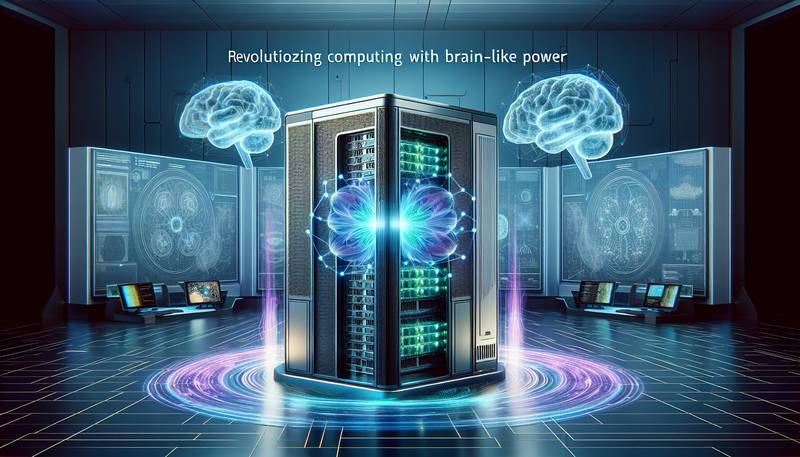Intel's Hala Point: Revolutionizing Computing with Brain-like Power

Intel has made a significant breakthrough in neuromorphic computing with the creation of the world's largest "brain-based" computing system called Hala Point. This cutting-edge technology aims to replicate the human brain's structure for more efficient data processing, offering faster speeds and higher accuracy.
Hala Point: A Quantum Leap in Neuromorphic Computing
The microwave-sized Hala Point boasts an impressive 1.15 billion artificial neurons, a tenfold increase over its predecessor, Pohoiki Springs. This leap in neuron capacity allows Hala Point to be ten times faster, fifteen times denser, and house one million circuits on a single chip, dwarfing Pohoiki Springs' 128,000 circuits.
Empowering Sandia National Laboratories with Neuromorphic Technology
Armed with 1,152 Loihi 2 research processors, named after a Hawaiian volcano, Hala Point will enable Sandia National Laboratories to explore the realm of extensive neuromorphic computation. Intel is excited to see how Sandia will leverage this advanced system to pioneer solutions in computing problems across various domains.
The Future of Neuromorphic Computing
The Sandia team is optimistic about Hala Point's potential, developing specialized algorithms to harness the system's full capabilities. They believe this groundbreaking technology will usher in an era of large-scale neuromorphic computing, simulating the unparalleled processing, response, and learning abilities of the human brain.
"Bigger is far better," explained Brad Aimone, a researcher at Sandia. He emphasized the parallel computation over multiple neurons as a stark difference from current computers. Aimone pointed out that with more neurons, the neuromorphic system could perform increasingly complex calculations, akin to the vast neuronal networks in mammal brains and advanced AI algorithms.
As Hala Point begins its journey, it promises to shape the future of computing, closely mirroring the complex and fascinating capabilities of the human brain.


